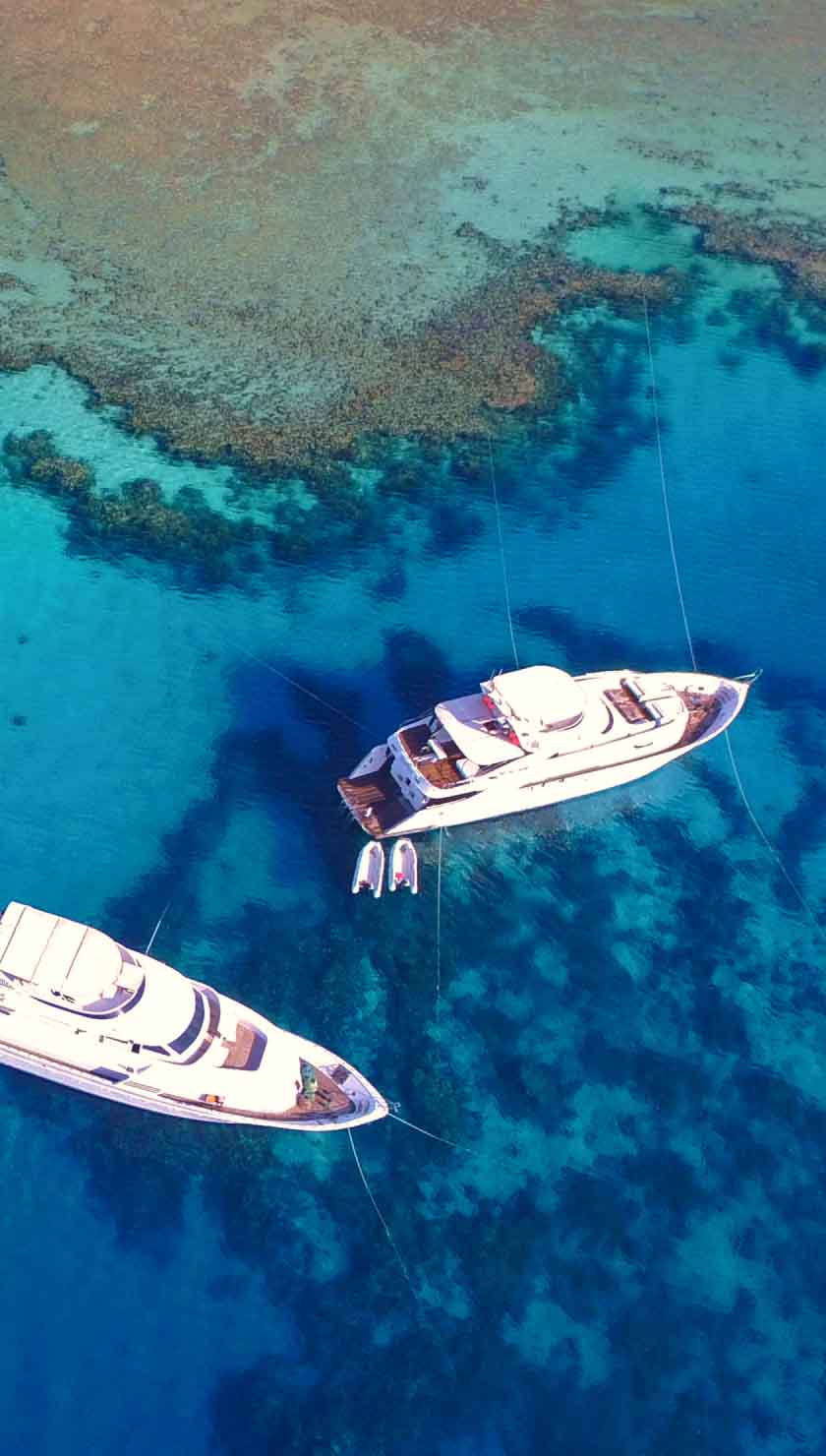Liveaboard Diving in South Male Atoll
What To Expect On a South Male Atoll Liveaboard
South Male Atoll liveaboard diving in the Maldives is famous for it's pelagic diving and it's Kandus. Across the Vaadhoo channel from North Male Atoll lies South Male Atoll. Only three islands in this atoll have local communities, though there are many resorts on the uninhabited islands. All in all, South Male Atoll has a busier traveler and guesthouse scene, but perhaps a more laid-back atmosphere than North Male, with its high population density and capital city. Independent travelers can find accommodation and tour options on the island Maafushi- a good option for divers who want to relax from a land-based location before or after their liveaboard dive cruise.
South Male Atoll Underwater
Maldives liveaboard diving in South Male Atoll is all about kandus, which are channels that connect the interior of an atoll to the open ocean. No fewer than six kandus provide highways for strong, nutrient-rich currents to enter South Male Atoll, and this attracts big schools of fish, reef sharks, and a variety of other large pelagics. In fact, South Male Atoll is often regarded as the premier reef shark destination of the Central Atolls. Hard coral cover, on the other hand, remains better in North Male, though South Male Atoll dive tours still enjoy abundant colorful soft corals at many sites.
Dive Sites Of South Male Atoll
South Male liveaboard itineraries are available on most Maldives cruises and here is a selection of a few dive sites that you might visit during your dive trip;
Embudhoo Kandu that tops the list for sharks in South Male Atoll. This channel hosts large populations of white tip and grey reef sharks, and it's been designated a marine protected area to conserve them. Embudhoo Kandu lies in the northeast of South Male Atoll, and divers there should be prepared to drift; you'll cover a great distance in the current, whizzing along an abyssal drop-off, through thin canyons, into caves, and around a coral-bedecked thila at the end. Besides sharks, divers may encounter Napoleon wrasse, huge groupers, rays, and benthic reef inhabitants that will give photographers plenty of material to work with.
Guraidhoo Kandu South is actually many sites under one name. This is a large area with two channels and a reef flat; it cannot be covered in only one dive, and the topography varies widely. Divers may jump from their dive dhoni into scenes of vertical or horizontal topography, from walls, to slopes, to channels, to caves. One particular channel offers a 300 meter-long stretch of drift diving with sheer walls on both sides, and the end point at the open-ocean drop-off is full of pelagic fish life, including sharks and Napoleon wrasse. It's a good idea to take a couple breaks from the current in the small caverns of the canyon walls, where colorful soft corals and black coral bushes adorn the rocky substrate.
Kuda Giri Wreck offers inexperienced divers a great chance to explore a shallow shipwreck without fighting the current. This small ship was intentionally sunk to create an artificial reef, and it has indeed attracted benthic organisms like sponges and coral to settle and grow upon its hull. Fish life followed, and small permanent residents like batfish and glassfish are joined by regular visits from larger reef animals, like Napoleon wrasse and turtles. A nearby pinnacle tempts divers to explore for nudibranchs, octopus, and other reef life.
Kandooma Thila is considered by many to be the first or second-best dive site in South Male Atoll. The current rips through a thin channel along the side of this pinnacle, and it is chock-full of fish drama, mostly involving who eats who. Jacks dart toward colorful anthias, barracuda patrol in schools, reef sharks glide watchfully over the substrate, and predatory reef fish like groupers and snappers wait for their chance in holes and sheltered corners. Divers can only circumvent the thila for so long, at a certain point, thereís nowhere to shelter from the current, and the safety stop is usually performed in the blue.
Cocoa Thila has earned a reputation throughout the Central Atolls as one of the best dive sites of the area, though its appeal is quite current-dependent. At the wrong time of day, there can be either no fish (without water flow), or the flow can be so strong that diving is virtually impossible. Assuming that your experienced dive guides choose the right schedule, Cocoa Thila delivers a huge serving of big fish activity. Sweetlips, grouper, snapper, sharks, eagle rays, tuna, and jacks abound.
Top Tips For Divers
In the Maldives, a new Green Tax of 6 USD per person per night applies for every tourist in the country. The official language is Maldivian, also called Dhivehi.
Gear to bring includes your own mask, booties, fins, and dive computer. These are personalized pieces of equipment which we don't recommend renting. An ill-fitting mask or pair of fins can make diving virtually impossible, and a dive computer is your most-important piece of safety equipment.
Getting To South Male Atoll
Like anywhere in the Maldives, South Male Atoll is best dived by liveaboard so your dive dhoni can hop between dive sites with the least hassle, and your cruise can easily sail from North Male to other destinations. The length of liveaboard itineraries in South Male Atoll usually ranges from 7 to 10 nights, with a budget from a bit over 200 to 350 euros per night. South Male Atoll liveaboards often commit to a northern or southern route to fit in a bit more of Ari and Baa (to the north), or Vaavu and Meemu (to the south).
Male is the main departure location for South Male Atoll Maldives liveaboards, accessible by direct flights from Dubai, Singapore, and Colombo. Longer international flights from Europe, America, China, India, and Australia often connect through the regional airports mentioned above.
Diving South Male Atoll is possible all year round, but the northeast monsoon from December to May allows the calmest surface conditions and the least rain. The water temperature usually stays between 26 and 29 C, and visibility between 10 and 30 meters.











